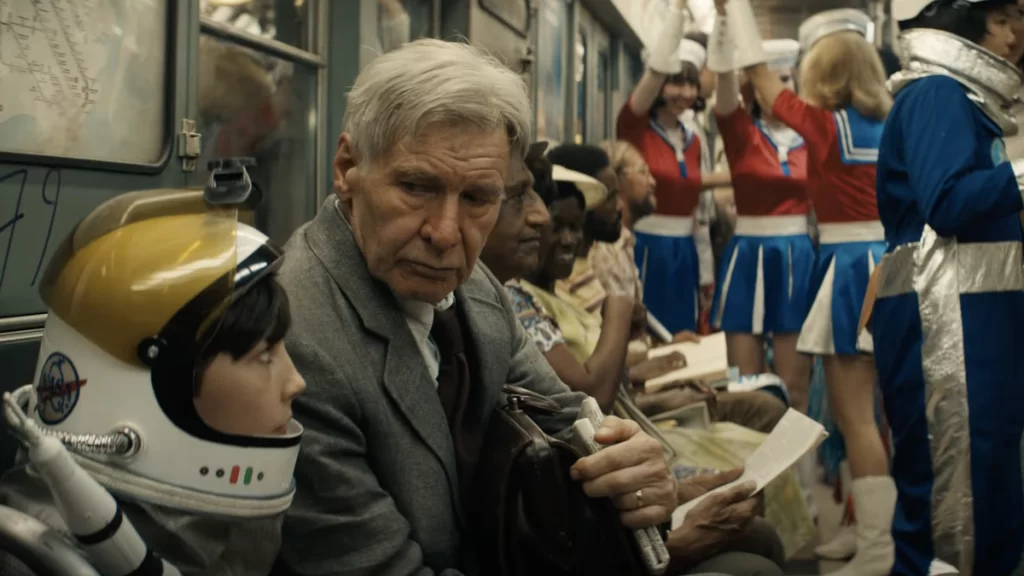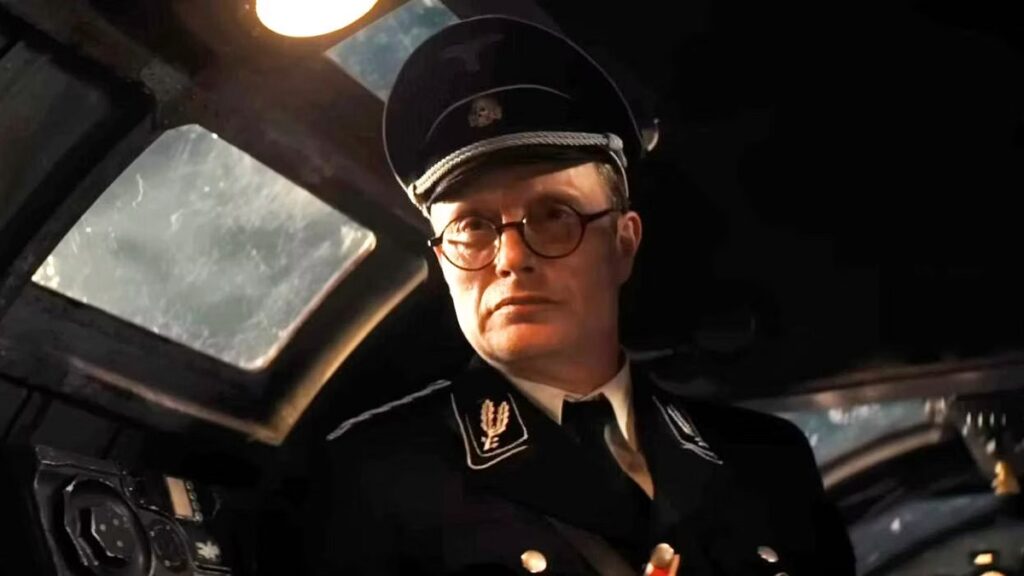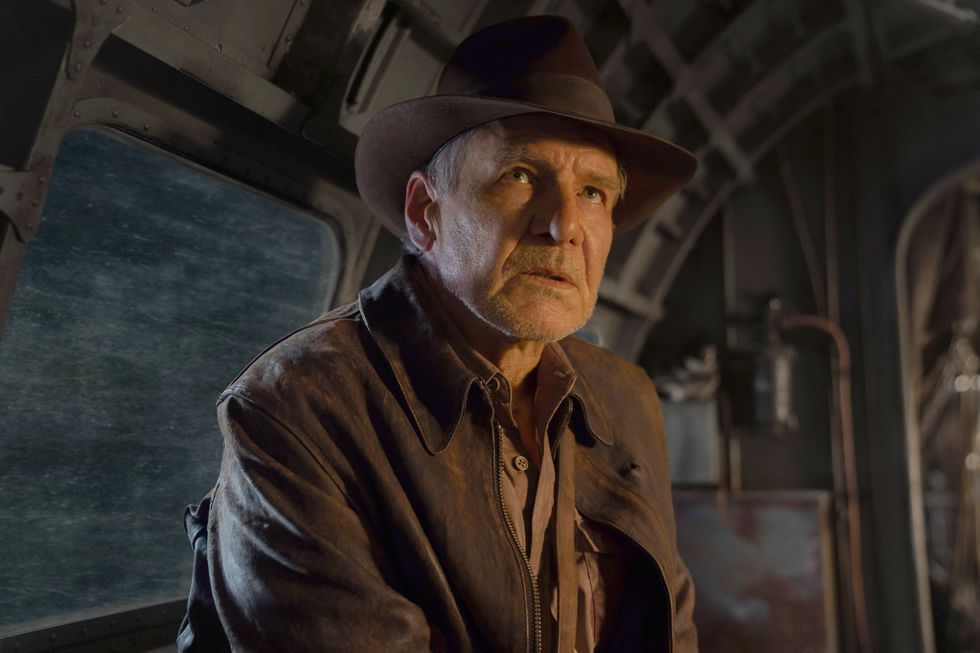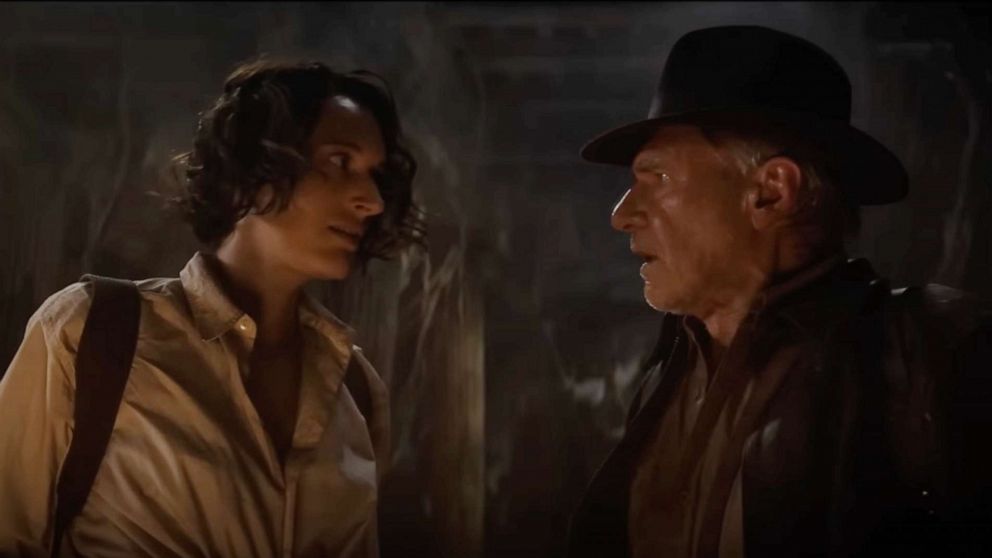
The first thing you notice is the thing you don’t notice: The Paramount logo doesn’t dissolve into a real-life mountain, instead smoothly transitioning to the sterile placard for Lucasfilm Ltd. And so, before a frame has flickered on screen, Indiana Jones and the Dial of Destiny has differentiated itself from its four predecessors. In some ways, this is a smart move. After all, it’s been 42 years since Harrison Ford outraced a giant boulder in Raiders of the Lost Ark and lodged a smash franchise into pop-culture lore in the process; undue fidelity to such a treasured past might brand this new effort as a pale imitator, like one of those moldy skeletons Indy brushes past on his way to fortune and glory. But not all departures from prior history are healthy, and the change that most harms Dial of Destiny takes place not in the script, but behind the camera: This is the first Indiana Jones adventure that wasn’t directed by Steven Spielberg.
This is perhaps unfair to James Mangold, one of an infinite number of filmmakers who is guilty of being less talented than Spielberg. No stranger to inheriting a beloved fictional character—he gave Hugh Jackman’s Wolverine a lovely and powerful send-off in Logan—Mangold approaches his assignment here with what might be called cautious reverence. John Williams’ famous “Raiders’ March” theme appears on the soundtrack, but only sparingly. Indy occasionally deploys his classic bullwhip, but his weapon of choice tends to be his fists. Cherished supporting characters reemerge—including John Rhys-Davies’ Sallah, plus another figure best left unspecified—but only for a scene or two. The chief villains are once again Nazis, but they (mostly) operate in secret rather than with swastika-emblazoned armbands. The result is that Mangold has made a new Indiana Jones movie both like and unlike the old Indiana Jones movies, tentatively perpetuating their legacy without being beholden to it.

And honestly, he does a decent job. Dial of Destiny is my least favorite picture in the series, but that’s praising it with faint damnation when you consider that the existing franchise comprises one absolute masterpiece (Raiders) and three highly entertaining romps (yes, including Crystal Skull, a flawed film that nevertheless sizzles with brio and ingenuity). As he showed in Ford v Ferrari and 3:10 to Yuma, Mangold exhibits a sturdy grasp of pacing and framing, and his set pieces are rarely overcluttered. Tasked with taking up the mantle of purveyor of boyhood magic, he has performed his duty with professionalism and competence.
The problem is that “professionalism” and “competence” are not words typically associated with Indiana Jones—or, more pointedly, with the man who brought him into being. Spielberg may be underappreciated as a pure craftsman, but the term “Spielbergian” rarely refers to polish or technique; it is instead associated with majesty and wonder. This franchise achieved cinematic immortality not for its fluidity but for its awe: for the look on Ford’s face in Raiders as a beam of sunlight pierces a dusty map room, for the moment in Temple of Doom when a rickety bridge turns into a death trap, for the scene in Last Crusade when an avaricious fiend chooses poorly. Dial of Destiny’s adequacy is thus as double-edged as the swords Cate Blanchett and Shia LaBeouf duel with during the best sequence in Crystal Skull; it protects the movie from ruin, yet it also exposes its dispiriting lack of true grandeur.

But enough with obligatory comparisons. On its own terms, Dial of Destiny features plenty of activity, if scant sublimity. The arc of its narrative is pleasingly familiar: There’s a magical MacGuffin floating about—this time it’s an ancient device developed by Archimedes that can create “fissures in time,” whatever that means—and Indy needs to find it before the bad guys do. Those pests are once again members of the Third Reich, or at least one former member; the film opens with a lengthy prologue set at the tail end of World War II—Ford’s face is digitally de-aged, a controversial process that betrayed no seams to this viewer’s accepting eyes—during which Indy grapples with a German scientist named Voller (Mads Mikkelsen, flat) for control of the titular instrument. It’s a hectic and elaborate sequence—Indy escapes from a noose, leaps from a speeding truck onto a motorcycle (always cool), and eventually battles Voller and other Nazis aboard and atop a moving train—that’s engaging without being especially exciting. (The train segment in particular has the misfortune of arriving in theaters shortly after the gobsmacking oner in Extraction 2.)
That tone of congenial sufficiency persists as we flash-forward a quarter-century, when our favorite fedora-clad professor (“You call him Dr. Jones!”) is finally retiring from his post at Hunter College. Voller, meanwhile, has disguised his past and is using his scientific acumen to assist the American government in the Space Race; he is also, via a blurry and unconvincing patchwork of contacts, leveraging the CIA in his decades-long pursuit of the lost ark dial, which he intends to wield for unknown but assuredly nefarious purposes. Yet another interested party is Indy’s goddaughter, Helena (a welcome Phoebe Waller-Bridge), who plies him for information about the contraption, and whose motives are less academic than pecuniary.

Whaddya need, a roadmap superimposed over the characters’ travel movements across various countries? Every Indiana Jones picture is complicatedly uncomplicated; the ornate mythology and the shifting allegiances are just window dressing for the chases and the shootouts. The best of these in Dial of Destiny arrives during an early Manhattan parade, when Indy mounts a horse and evades his foes by galloping through the Big Apple’s subway tunnels; it isn’t exactly (under)groundbreaking, but it nonetheless evokes the spirit of adventure that animates the franchise. Other set pieces—a frenetic taxicab pursuit through the streets of Tangier, a cat-and-mouse hunt in search of a tomb—are more functional than inspired, unfolding with capable speed but lacking in specificity or wit. (Note to Mangold and his co-writers, Jez and John-Henry Butterworth and David Koepp: The script needs more whip.) The movie’s low point is a literal one, when Indy and Helena (along with an overqualified Antonio Banderas) dive into the waters of the Mediterranean and wrestle with some angry eels; it’s a weirdly dull scene that unfortunately underscores the drabness of Mangold’s colorless palette. (Avatar: The Way of Water, this is not.)
On a character level, the movie’s best addition is Helena, whom Waller-Bridge imbues with impish charm; the relationship between her and her godfather is difficult to pin down, and that complexity makes it appealing. (Indy’s unfulfilled personal life in the interval since Crystal Skull is explained away with a graceless anecdote about Vietnam, one of the screenplay’s periodic gestures toward franchise continuity.) Voller, by contrast, is an unmemorable heavy, more defined by his aspirations than his personality; Mikkelsen previously delivered one of the greatest performances of any James Bond villain in Casino Royale, but he is arguably too fine an actor to portray a demented Indiana Jones antagonist.

For most of its runtime, The Dial of Destiny coasts on Ford’s rugged allure and Mangold’s serviceable choreography. But in its final act, the movie suddenly abandons its ambitions of complacency and aims for something far loftier, rejecting plausibility and safety in favor of wild fantasy and heedless imagination. It’s a bold move that yanks the film out of its satisfactory doldrums, and it’s the only time when Dial of Destiny feels not like a lesser Indiana Jones sequel, but like its own independent creation.
Whether this reckless maneuver is enough to elevate the movie from passable simulacrum to genuine article, the sands of history will decide. In the present, I can neither condemn The Dial of Destiny as a mercenary brand extension, nor can I commend it as a follow-up truly worthy of its hero. All I can do is appreciate its minor pleasures and acknowledge its predictable failings. This is a franchise built on solving riddles, and here it provides the easiest of them all. The case of “Indiana Jones and the Missing Director” was never a mystery in the first place.
Grade: B-
Jeremy Beck is the editor-in-chief of MovieManifesto. He watches more movies and television than he probably should.
